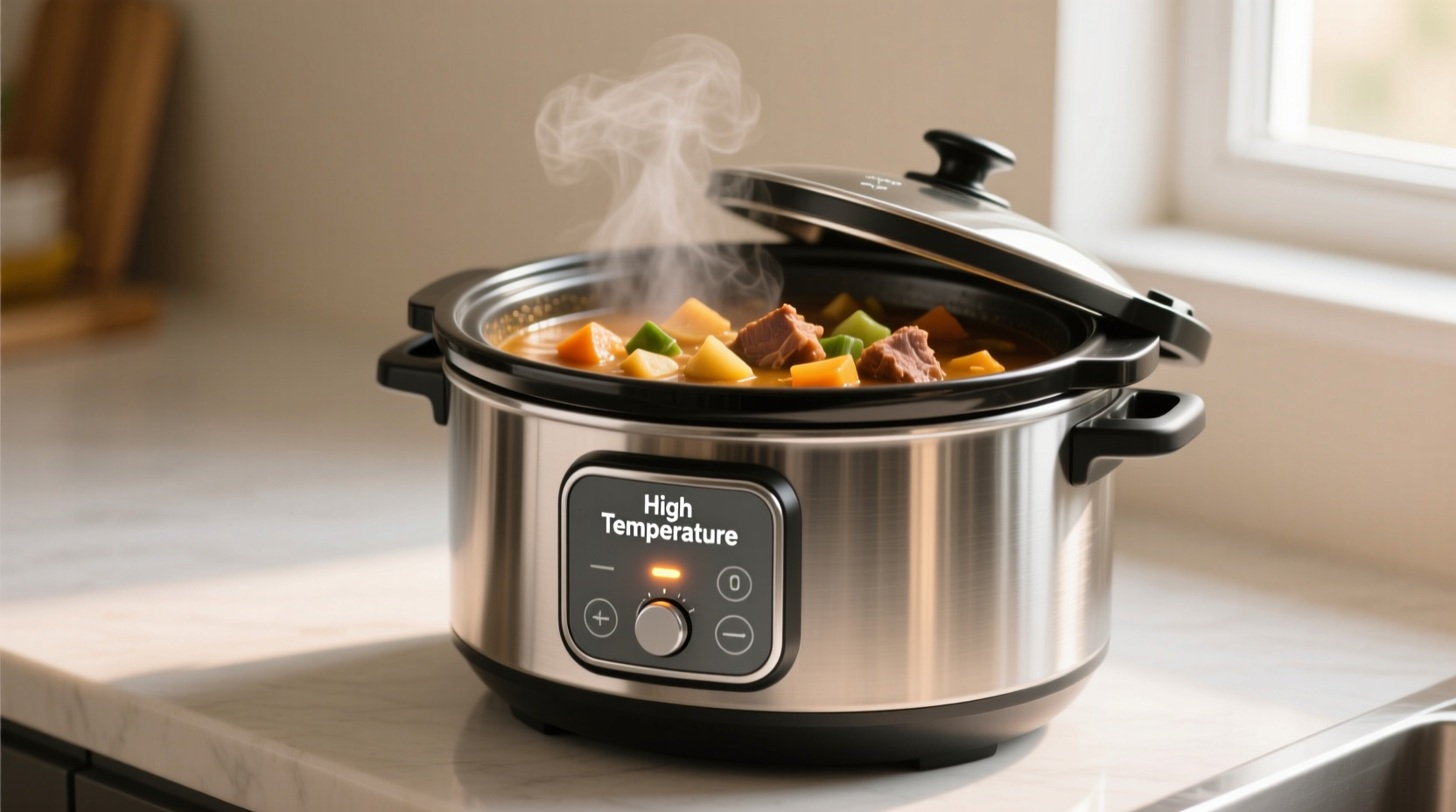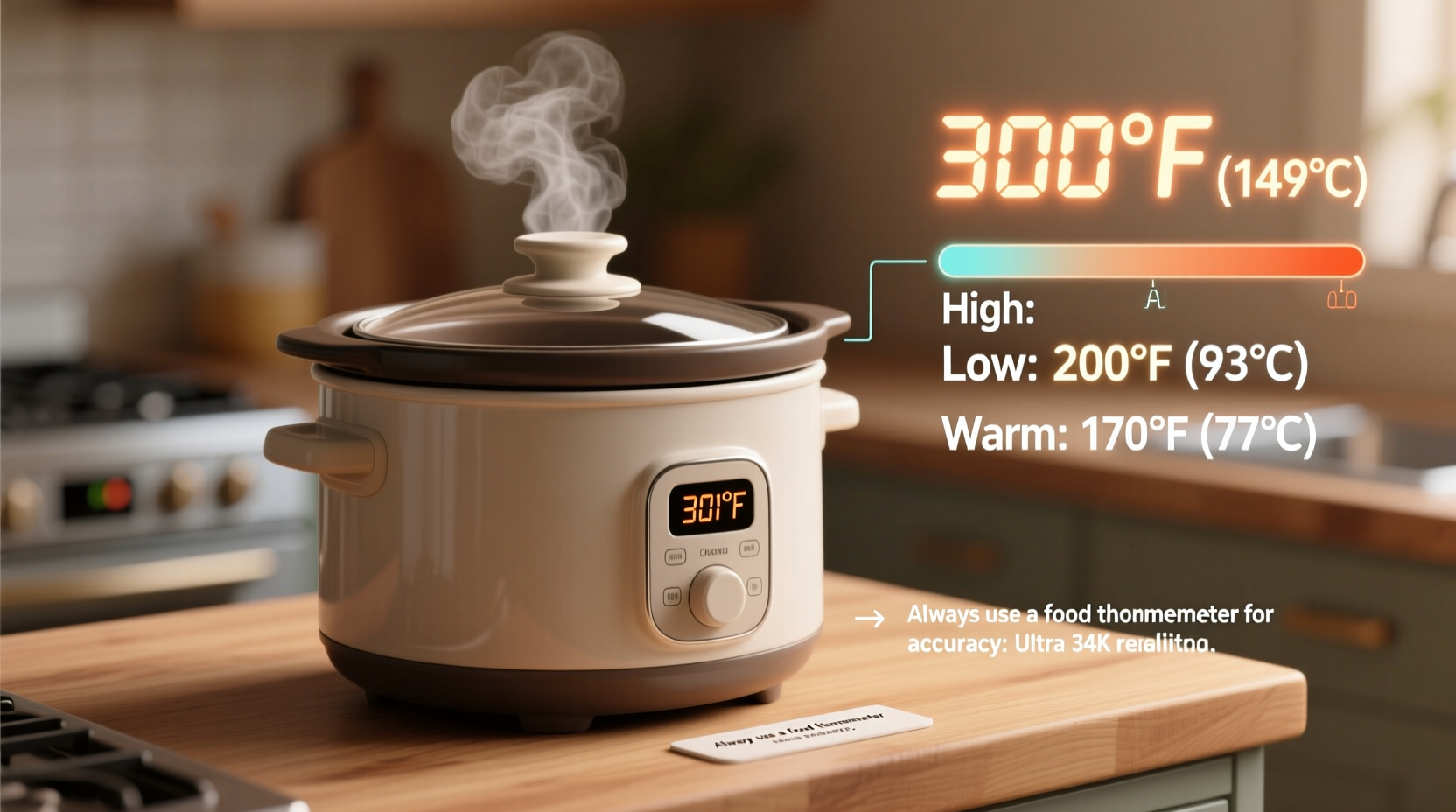The 'High' setting on most slow cookers reaches a maximum temperature of approximately 300°F (149°C), but maintains a consistent cooking temperature between 200-210°F (93-99°C) once the food is heated through. This precise temperature range ensures safe, slow cooking while developing deep flavors in your dishes.
If you've ever wondered what temperature "High" actually means on your slow cooker, you're not alone. Many home cooks mistakenly assume slow cookers operate at much higher temperatures. Understanding these settings is crucial for both food safety and achieving perfect results in your favorite recipes.
Understanding Slow Cooker Temperature Settings
Slow cookers are designed to cook food at low, consistent temperatures over extended periods. The "High" setting isn't about extreme heat but rather a controlled temperature that safely cooks food while developing complex flavors.
When you select "High" on your slow cooker, the appliance initially heats more rapidly to reach the target temperature. Once that temperature is achieved, it automatically reduces power to maintain a steady cooking environment. This prevents boiling and ensures gentle, even cooking.
| Slow Cooker Setting | Initial Heating Rate | Final Cooking Temperature | Typical Cooking Time |
|---|---|---|---|
| High | Faster (2-3 hours to reach temp) | 200-210°F (93-99°C) | 3-4 hours for most dishes |
| Low | Slower (7-8 hours to reach temp) | 185-200°F (85-93°C) | 7-8 hours for most dishes |
| Warm | Maintains temperature | 165°F (74°C) | Up to 4 hours after cooking |
Why Slow Cooker Temperatures Matter for Food Safety
Understanding these temperatures is critical for food safety. According to USDA food safety guidelines, the "danger zone" for food is between 40°F and 140°F (4°C and 60°C), where bacteria multiply rapidly. The "High" setting on your slow cooker ensures food passes through this danger zone quickly and maintains a safe temperature throughout cooking.
When using the "High" setting, most recipes will reach a safe internal temperature within 3-4 hours. This makes it ideal when you need to prepare meals more quickly while still benefiting from slow cooking's flavor development.
When to Choose High Over Low Setting
The "High" setting isn't just for time-pressed cooks. Certain ingredients and dishes actually benefit from the slightly higher temperature:
- Tougher cuts of meat - The higher temperature helps break down collagen more efficiently
- Dishes with raw meat - Reaches safe temperatures faster, reducing bacterial risk
- Recipes with dairy - Less time at temperature prevents curdling
- When cooking for fewer people - Smaller quantities heat more quickly
However, some dishes still perform better on "Low," particularly those with delicate ingredients or where maximum tenderness is desired without any risk of overcooking.
Common Misconceptions About Slow Cooker Temperatures
Many home cooks operate under incorrect assumptions about slow cooker temperatures:
- Myth: "High" setting cooks at 300°F the entire time
Reality: It reaches 300°F initially but stabilizes at 200-210°F for actual cooking - Myth: You can substitute "High" for conventional oven temperatures
Reality: Slow cookers work through moist heat conduction, not dry oven heat - Myth: All slow cookers have identical temperature settings
Reality: There can be 10-15°F variations between brands and models

Practical Tips for Using the High Setting Effectively
Maximize your slow cooker's "High" setting with these professional techniques:
- Pre-sear meats before adding to the slow cooker for deeper flavor development
- Don't overfill - Keep between ¼ and ¾ full for optimal heat circulation
- Limit lid lifting - Each opening adds 15-20 minutes to cooking time
- Add dairy products during the last hour to prevent curdling
- Check internal temperatures with a food thermometer for safety
Troubleshooting Temperature Issues
If your slow cooker isn't performing as expected, consider these common issues:
- Food not reaching proper temperature: Test your slow cooker with water - it should reach boiling point (212°F/100°C) on High within 2 hours
- Overcooking on High setting: Reduce cooking time by 30-50% compared to Low setting recipes
- Inconsistent heating: Older models may develop hot spots - stir occasionally if possible
Remember that slow cookers are designed to maintain temperature, not to rapidly heat food. The "High" setting simply reduces the time needed to reach the target cooking temperature.
Understanding Your Specific Model
While most slow cookers follow similar temperature patterns, there can be variations between brands. Consult your manufacturer's instructions for precise temperature information about your specific model. The National Center for Home Food Preservation provides comprehensive guidelines for safe slow cooking practices that apply to all models.
Frequently Asked Questions
Is 300 degrees considered hot on a slow cooker?
While the heating element may reach up to 300°F (149°C) initially, the actual cooking temperature stabilizes between 200-210°F (93-99°C). This is considered "hot" for slow cooking purposes, but significantly lower than conventional oven temperatures.
Can I convert a low setting recipe to high setting?
Yes, generally reduce cooking time by about 50% when converting from low to high setting. For example, an 8-hour low recipe would become approximately 4 hours on high. However, some delicate dishes may not convert well, so check recipe-specific recommendations.
Why does my slow cooker not reach boiling temperature?
Slow cookers are designed to maintain temperatures just below boiling (212°F/100°C) to prevent excessive evaporation and ensure gentle cooking. The high setting typically maintains 200-210°F (93-99°C), which is hot enough for safe cooking but below the boiling point.
How do I test if my slow cooker's high setting is working properly?
Fill your slow cooker half full with water, set to High, and check the temperature after 2 hours. It should reach at least 190°F (88°C). After 4 hours, it should maintain between 200-210°F (93-99°C). Use a reliable food thermometer for accurate readings.
Is it safe to leave a slow cooker on high unattended?
Modern slow cookers are designed to be left unattended on either setting. The high setting reaches the target temperature more quickly but then automatically reduces power to maintain a safe cooking temperature. Always follow manufacturer guidelines and ensure your slow cooker is placed on a heat-resistant surface away from flammable materials.











 浙公网安备
33010002000092号
浙公网安备
33010002000092号 浙B2-20120091-4
浙B2-20120091-4